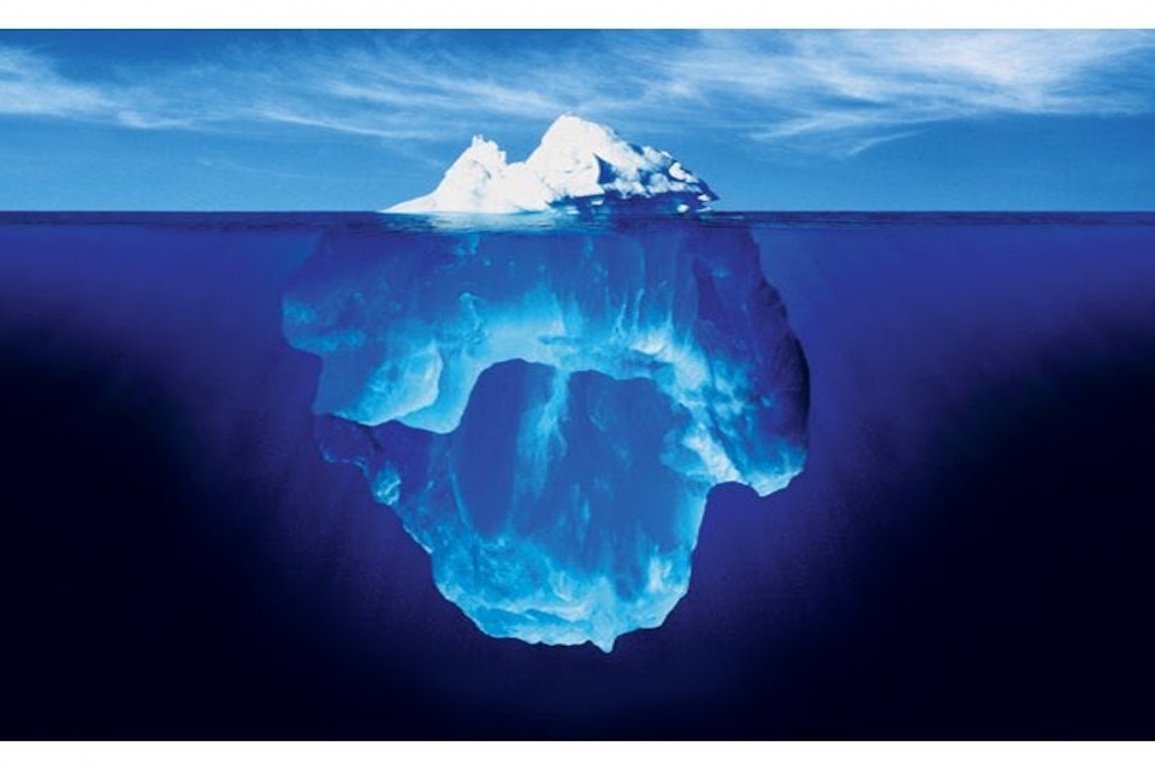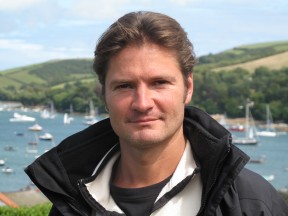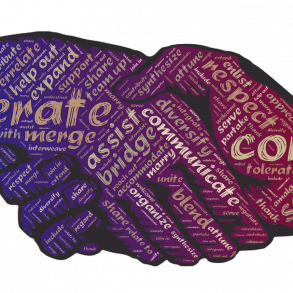By Giles Hutchins for Enlivening Edge Magazine
There’s an old adage, ‘May you live in interesting times’. When someone said this to you it was seen as both a blessing and a curse, because to live in interesting times means to embrace simultaneous breakdown and breakthrough. Transformative times can invoke fear, a desire for control, and a search for certainty and security. Yet such times can also be emancipating, as they can provoke us to open up, dig deep, and reach beyond the limiting norms of the day while pioneering into the future.
Frederic Laloux’s timely and important work around Teal gives us guidance on the style and tenor in which we can embrace the future, those of us courageous enough to break rank and prototype the new in these times of change.
The three principles of Teal can act as guidance for us as we learn to transform ourselves and our organisations amid these choppy VUCA (Volatile, Uncertain, Complex, Ambiguous) waters:
- Evolutionary purpose – what is our purpose at personal and organisational levels, and how do we best allow this sense of purpose to deepen and evolve as our context and learning journey inevitability deepen and evolve?
- Authenticity and wholeness – how do we create the conditions, both inside ourselves and within our organisations, for a deeper quality of authenticity and wholeness to emerge within us and through our relationships with others?
- Self-management – as our relations and organisations become more purposeful and authentic, we are required to transform our command-and-control mechanisms into governance dynamics that empower and ignite rather than control and predict. How do we best embody these self-organising methods within ourselves while deepening our personal responsibility, sense of purpose and wholeness, and bringing this into our interpersonal relations and team dynamics during day-to-day tensions and emotionally charged situations?
These are challenging questions, and are the body of our learning journey towards Teal.
In my experience as a field practitioner engaging with all sorts of different shapes and sizes of organisations embarking on this ‘path beyond paths’, I often witness how easy it is to unwittingly apply the very same logic to our learning journeys that created the very challenges we are trying to move beyond. Einstein’s well-hackneyed insight about being unable to change systems with the same consciousness that created them is all-too-pertinent here.
In our desire to get on with making Teal our new reality, we look for tools, frames of reference, methods, and structures outside of ourselves—cultural values charters, mission statements, decision-making protocols, and holacratic methods, for instance. This has its place of course, and yet there is often an overly-eager tendency to find solutions to our problems ‘out there’, believing that with the right toolkit we can ‘fix it’. This is part of the inherent problem of our current paradigm, an imbalanced focus on the ‘outer’ at the expense of impoverishing the ‘inner’.
And then, we ‘show up’ with this impoverished ‘inner’ while attempting to make hip-and-cool ‘outer’ initiatives work well in the midst of our daily stresses-and-strains.
The business world is now littered with examples of wounded organisational cultures that have embarked on painful out-of-kilter paths of transformation. We can take learning from this.
First, we need to recognise this tendency to seek solutions ‘out there’ to our problems. This can encourage too much of a focus on fixing symptoms that are actually downstream from the underlying causes, while often leaving the root causes inadequately addressed. We see this tendency manifesting in all areas of our socio-economic system from leadership and organisational development, to political activism, management education, health and wellbeing, combatting climate change, to corporate responsibility, you name it.
In reality, we need to attend both to symptoms and to underlying root causes; we need to address both ‘outer’ structures and systems as well as our ‘inner’ awareness/consciousness. In so doing, we become ever-aware of our own inner-outer dynamic within our own lives and as part-and-parcel of our own organisational development as leaders and change agents.
Put simply, leading-with-Teal is first and foremost a radical act of leading-self. Our systems ‘out there’ transform as we transform our embodied being, our quality of awareness: our ‘being’ informs and transforms our ‘doing’, not the other way round.
Considering Laloux’s three Teal qualities of Evolutionary Purpose, Wholeness and Self-management, we first need to create the conditions for our own evolutionary purpose, wholeness, and self-management to spawn in us before we can effectively embark upon organisation and systemic change. Yet we need to recognise that ‘no person is an island’; our lives are immersed in a rich milieu of social relations in and out of work, and our ‘work life’ is not neatly separated from our ‘home life’.
As we explore here—and also in the next two articles that make a series of three—this embracement of Teal is a lived process of ‘becoming more human within our more-than-human world’.

‘Teal’ is not a thing; it’s our becoming who we were born to be, becoming our essential nature, a continuous revealing and peeling back as we let go of habituations and self-limiting tendencies. It’s an ongoing learning to live and lead with love and wisdom through vulnerability, curiosity, courage, and compassion.
The challenge for each of us is undergoing this metamorphic revealing process in the midst of our busy working environment, while our organisations are simultaneously going through an unceasing transformation in this VUCA world.
‘There’s a difference between knowing the path and walking the path.’ Morpheus, The Matrix
Walking-the-talk-of-Teal
Mother Teresa once profoundly said, ‘We cannot do great things; we can only do small things with great love.’ This is a powerful meditation for embodying Teal.

To walk the path with small steps of great love is what we are being called to do here.
Simple—yet not easy.
It begs the question, ‘How can we cultivate the self-awareness to notice and inquire into how we are embracing each evolving moment in our midst—are we embracing the moment, the interaction, the conversation, the executive decision, the difficult phone call, with love?’
Love—that’s not a word you hear often in business. That in itself is telling. It’s daring even to use the word ‘love’ in a business setting; why? And what do we truly mean by the word ‘love’?
The founders of Western civilisation (the ancient pre-Socratic Greek philosophers such as Parmenides, Pythagoras, Zeno, and Thales) used many words to describe the ebbs, flows, undercurrents, and eddies of love in life. Love was an essential aspect of their worldview and their everyday participatory engagement of life.
Over time in the West we have lost this rich embodiment of love within our cultural narrative, and these days the word all-too-quickly conjures up some kind of Hollywood romantic scene that feels inappropriate for the busy working environment or even a warning sign of sexual harassment round the corner. Many of today’s working environments seem fraught with fear rather than abundant in love.
Fear → Love
Yet love is primary to living purposefully, responsibly, and authentically; it is foundational to our embodiment of Teal. Latest studies in neuroscience prove that deepening our capacity for love—and entraining our brainwaves with those of the heart—has a direct impact on our ability to
- enhance our consciousness,
- more readily sense into the systemic, synchronistic, and interconnected nature of our ever-changing business environment, and
- become more effective leaders and change agents to boot.
Mother Teresa is right; we commit nothing but a fraud to ourselves and others in seeking to embark on ambitious structural changes and transformation programmes when the small steps we take are not walked with love. The devil is in the details. It is in the quality of our ‘showing up’ that we either invite in more soulfulness or more egotism, more love or more fear, more openness and empathy or more political posturing and Machiavellian mischief.
This is the front line of our work in embodying Teal. It requires us
- to be self-aware
- to constantly self-inquire as we reach beyond our ego-desires and habituations of power-and-control, and
- to venture into the vulnerability of real love that seeks soul, service, authenticity, emergence and purposeful life-affirming connections.
In the next article within this series-of-three on embodying Teal-for-real, we will further explore this self-awareness and self-enquiry.
Giles Hutchins is a thought-leader and adviser on the future of business. His latest book Future Fit can be found on Amazon; see a short video about it here. He blogs at www.thenatureofbusiness.org and is Chairman of The Future Fit Leadership Academy






Giles, I am so touched and impressed by this article. What an amazing kickoff to this series of articles.
What touched me is that you are bringing to light the side of ‘going Teal’ that is very rarely looked at or even thought about. The points you bring up are so timely and critical to the transformational process of moving into a Teal, or second tier consciousness.
I love this, ‘Put simply, leading-with-Teal is first and foremost a radical act of leading-self.’ For me what you wrote here is the heart of all of this process we are all birthing. ‘we first need to create the conditions for our own evolutionary purpose, wholeness, and self-management to spawn in us before we can effectively embark upon organisation and systemic change.’
We so want to do something out there and do not think or feel to go within and see what needs to be made whole within us Just like Gandhi said, ‘Be the change you desire to see in the world.’
I am a partner with EE and this article is one of the best in terms of really getting to the heart and soul of the way for us to evolve into tier two consciousness. Thank you! And I am going to buy your book and recommend it to everyone.
I also invite you if you can, to join us for one of our EE community conversations and add your voice to the many voices that are talking and embodying leading edge concepts and principles.
PS not sure what you mean by this, ‘VUCA world’? For those of us that are not sure what it means.
In Joy
Will Van Inwagen
Thank you Will, I ditto and echo all you’ve said about Giles’ so-valuable sharing! In case he DOES want to join the EE Community Conversations, here is a path in: https://enliveningedge.org/ee-community-conversations/ And top right of any page, there is a signup option for notifications.
VUCA is Volatile, Uncertain, Complex, and Ambiguous. I think it’s an acronym coined from the military to describe situations or circumstances.